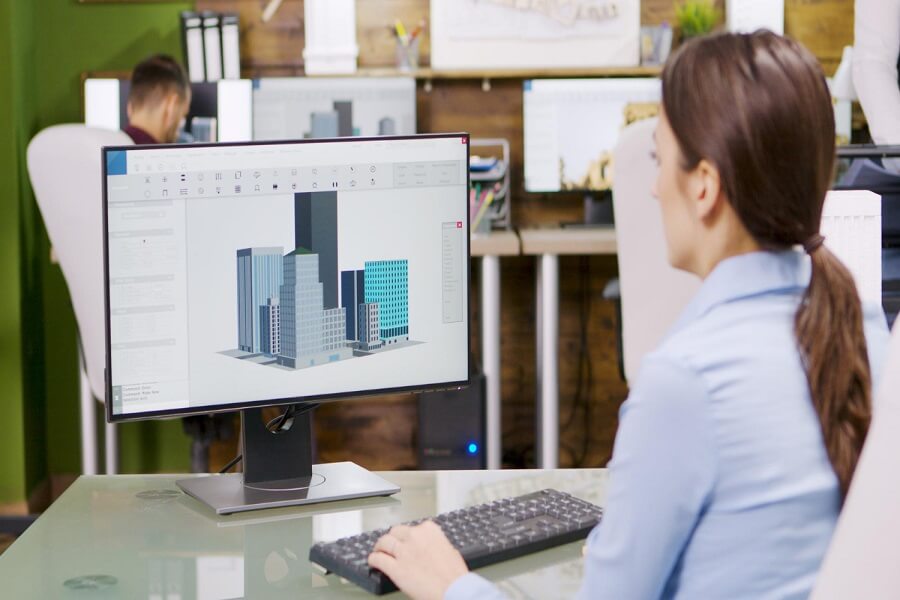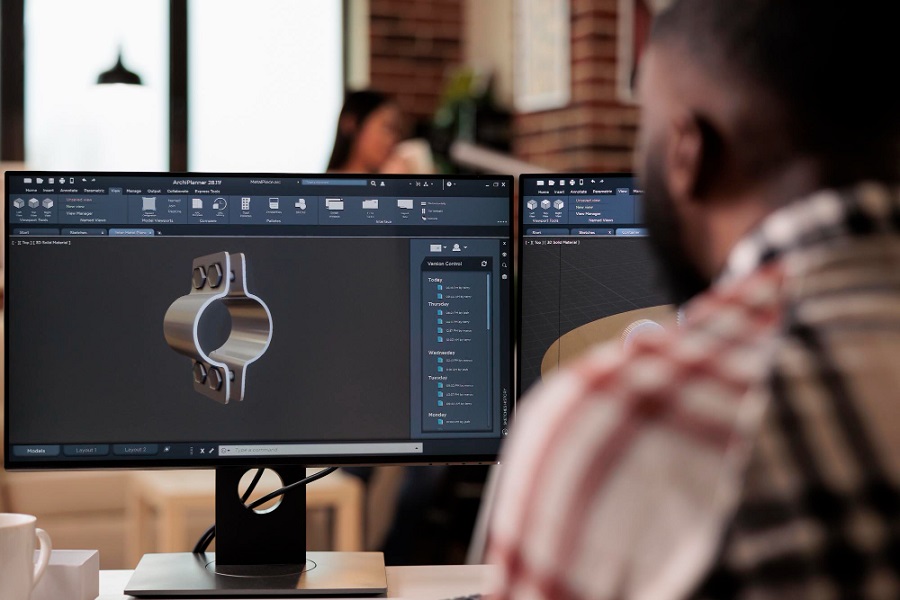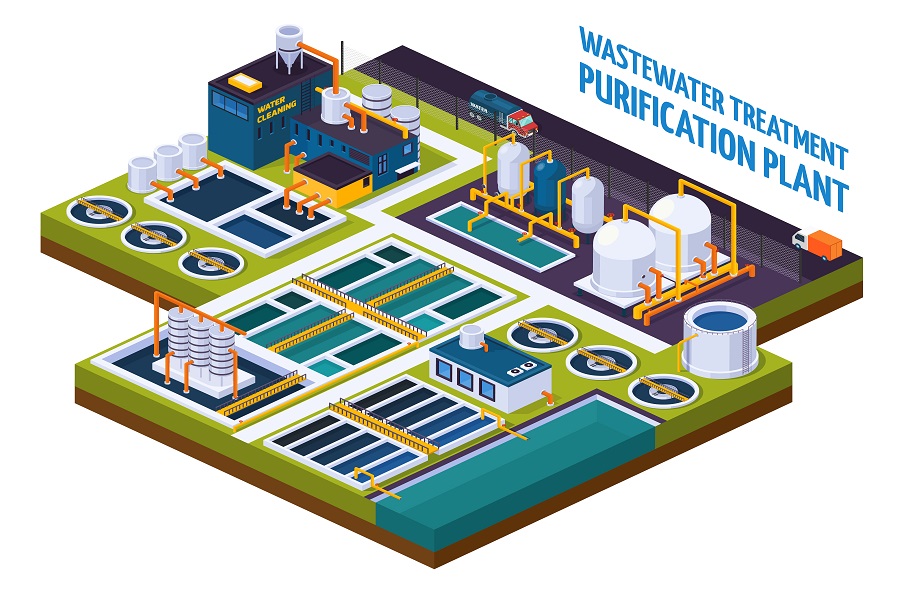Virtual Design and Construction (VDC) is a digital process that involves creating and managing digital models of construction projects. The digital model contains the physical and functional attributes of the building, including the building’s geometry, components, systems, and other relevant data.
An integral part of Building Information Modeling, VDC goes beyond 3D modeling. It incorporates additional dimensions (4D – time, 5D – cost, 6D – sustainability, etc.) to provide a comprehensive and collaborative approach to construction project management.
With it, engineers and architects can construct and deconstruct architectural models and make informed decisions about building construction. From deciding on the list of materials needed to finalizing the configuration of electrical components and evaluating the sizes and angles of pipes, VDC aims to bring precision and clarity to every project.
Thanks to its revolutionizing powers, VDC, over the years, has seen an increasing global adoption. Countries such as the United States, the United Kingdom, Canada, and Australia have been at the forefront of incorporating VDC into their construction practices. In fact, more than 73% of North American construction professionals use Building Information Modeling (BIM) and VDC methodologies to reduce their project schedule time, cost, and rework while bringing efficiency and accuracy into their construction processes.
What is VDC?
Virtual Design and Construction (VDC) involves creating a digital version of a construction project. This digital model includes all the details about the building, from its shape and parts to how everything works together. VDC goes beyond simple drawings and uses technology to help us plan and manage projects better. An extended version of 3D modeling, it helps us see the project from all angles.
So, while 3D BIM is a part of VDC, virtual design and construction is not limited to BIM. It uses various other tools like 3D laser scanning, simulation software, and point cloud data to bring precision and clarity to building construction.
The other dimensions of VDC include:
- 4D (Time): Virtual Design and Construction introduces the element of time to building information modeling and helps construction professionals evaluate the precise project’s timeline. By incorporating construction schedules into the 3D digital models, stakeholders can foresee project progression and identify potential delays.
- 5D (Cost): VDC also integrates cost data into the digital model. By accurately estimating material expenses, labor costs, and equipment requirements, it empowers project teams to stick to budgets and avoid cost overruns.
- 6D (Sustainability): Sustainability is at the forefront of modern construction, and VDC provides efficient energy modeling services. By incorporating environmental and energy performance data into the model, it helps to ensure green building construction.
- Beyond 6D: In certain cases, the application of VDC can extend even further to 6D and encompasses dimensions like 7D for facility management. This involves creating digital models using COBie and using them for ongoing operations and maintenance.
The Transformative Benefits of Virtual Design and Construction
Over the years, virtual design and construction has brought significant improvements and benefits to the construction industry. It enhances the collaboration, efficiency, communication, and decision-making powers of the stakeholders, not just at the beginning but throughout the project lifecycle.
Here are some ways in which VDC is improving and benefiting the construction industry:
1. Enhanced Visualization and Communication
By establishing a Common Data Environment (CDE), VDC provides all stakeholders with access to comprehensive project data. This collaborative approach ensures that everyone is working on the same file and model, which promotes effective communication and reduces misunderstandings and conflicts. Through enhanced visualization and communication, VDC enhances project understanding, fosters a shared vision, and ultimately contributes to smoother and more successful project outcomes.
2. Early Problem Detection and Resolution
VDC creates intricate digital models that offer a detailed representation of the project. These digital models serve as a valuable tool for identifying clashes, interferences, and conflicts in the design phase, much before actual construction begins. This proactive approach allows for early resolution of conflicts. It prevents costly rework and modifications during construction and enhances communication among project stakeholders. Teams gain a better understanding of design concepts and can make informed decisions for efficient and cost-effective project outcomes.
3. Improved Collaboration
By leveraging cloud-based digital platforms like BIM 360, Revizto, and Autodesk Construction Cloud, VDC facilitates a seamless exchange of information among stakeholders. Teams can work together more effectively regardless of their physical location. This shared digital workspace encourages real-time communication, streamlines decision-making, and fosters a collaborative environment. Thanks to VDC, today architects, engineers, contractors, and clients can work together cohesively and lead to successful project outcomes.
4. Accurate Quantity Take-offs
Quantity Take-off, BOQs, and Construction Cost Estimation is the key benefit of Virtual Design and Construction models. VDC models provide comprehensive information about materials, quantities, and components, helping stakeholders to calculate precise quantity takeoffs. By automating the quantity calculation process and eliminating manual errors, VDC enhances cost control and budget accuracy. It allows project stakeholders to make well-informed decisions about the amount of materials and resources. This also provides Bid support for projects By doing this, construction professionals can reduce waste and optimize project finances.
5. Efficient Planning and Scheduling
By integrating project data into schedules, VDC enhances the accuracy of project timelines. With it, teams can better anticipate milestones and deadlines. Moreover, the detailed scheduling capabilities facilitate the efficient allocation of resources. This includes labor, materials, and equipment. This streamlined approach minimizes delays, improves project efficiency, and contributes to cost savings, making VDC an invaluable tool in project management and planning.
6. Better Design Iteration
VDC modeling significantly enhances the design process. It allows stakeholders to create multiple design iterations and experiment with various scenarios in a digital environment so as to fine-tune designs and optimize resources.
Through the flexibility of digital modeling and simulations, VDC helps designers to explore multiple design options and the creation of designs that align closely with project goals and requirements. This iterative approach enhances the overall quality and performance of construction projects while streamlining the design phase.
7. Safer Construction
VDC models help construction teams to plan and simulate how they’ll build things. They can carefully check for safety aspects of construction before starting work. By spotting and fixing safety issues early, VDC helps to reduce accidents and injuries and makes safety a top priority from start to finish.
8. Improved Facility Management
The digital models created using COBie BIM serve as comprehensive and accurate representations of the building’s physical and functional attributes. They provide facility managers with essential information for efficient ongoing operations and maintenance. With access to this digital resource, facility managers can efficiently plan for maintenance schedules and conduct renovations with precision, thus extending the lifespan of the facility. VDC thus plays a crucial role in enhancing the long-term functionality and sustainability of constructed buildings.
9. Sustainability and Energy Efficiency
VDC helps in optimizing the building’s energy performance and aids in the creation of environmentally friendly designs that reduce energy consumption throughout the building’s lifespan. By integrating sustainability considerations into the digital model, VDC empowers architects and engineers to adopt energy-efficient and eco-friendly building practices that contribute to a greener and more sustainable future.
10. Remote Collaboration
Through digital tools like Revizto, BIM 360, and Autodesk Construction Cloud and virtual site visits, Virtual Design and Construction facilitates seamless remote collaboration. It enables stakeholders to work together effectively irrespective of their physical locations. By providing real-time access to digital models, data, and project information, VDC enhances communication, improves decision-making, and facilitates problem-solving while reducing the need for frequent on-site visits.
Wrapping Up
In all, Virtual Design and Construction has transformed the construction industry by leveraging digital technology to streamline processes. It helps in reducing risks, improving quality, and enhancing collaboration among stakeholders. The benefits of VDC extend from the design phase through construction and into the operational phase of a building or infrastructure asset.
However, to make the most of virtual design and construction technology, it is important to partner with experienced professionals and a proficient firm that specializes in seamless VDC implementation. These experts can provide the necessary knowledge, software tools, and training to effectively integrate VDC into your construction projects. Collaborate with a skilled VDC partner to fully harness its advantages and achieve successful outcomes throughout the entire project lifecycle.






